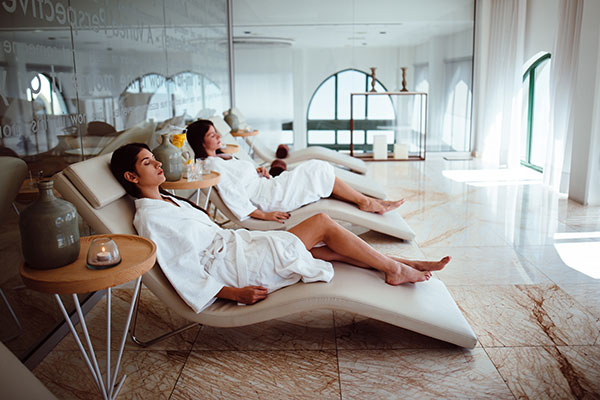
In 2024, hotels with integrated wellness achieved 20–35% higher average daily rates (ADR) than comparable traditional models, alongside stronger occupancy and longer lengths of stay, according to the 2025 RLA Global Wellness Real Estate Report with HotStats. The financial case is unambiguous: wellness is not an add-on; it’s a business driver.
The market momentum mirrors these results. The Global Wellness Institute reports that the wellness real estate sector rose to US $548 billion in 2024 and is projected to surpass US $1.1 trillion by 2029. Few areas of hospitality demonstrate this blend of consumer demand and investor confidence.
For hotel leaders, the opportunity is clear: growth will not come from only having treatment rooms and fitness equipment. It will come from weaving wellness into the core identity of the hotel, shaping every part of the guest experience. Here are five pathways to embed wellness into the ethos of your hotel.
1. Arrival and belonging
The first interaction sets the tone for the stay. Guests now expect check-ins to be intuitive, seamless and human. A warm, attentive welcome establishes belonging—arguably the most powerful wellness driver. Properties that cultivate arrival rituals and train staff to offer presence as well as efficiency position themselves for stronger loyalty.
2. Sleep and recovery
Sleep has emerged as the most valued outcome of travel. Beyond blackout curtains or quiet zones, technology-driven solutions are reshaping expectations. From advanced systems to small amenities, hotels that prioritize sleep consistently achieve ADR premiums and stronger guest loyalty.
3. Nourishment and beverage innovation
Food and beverage is a growth engine for wellness. Guests seek menus that balance indulgence with intention: mineral-infused hydration, nutrient-forward options, and functional dishes aligned with travel recovery. The alcohol-free beverage category, expanding at double-digit rates globally, reflects cultural momentum. Hotels that innovate here increase per-guest spend while reinforcing a brand of care.
4. Movement and thermal journeys
Fitness and thermal bathing remain pillars of hospitality wellness, but the differentiator is how they are programmed. Contrast therapy circuits framed as recovery education or rituals, short, guided workouts that fit business schedules, and morning walks connecting guests to the local environment transform into experiences. These integrated journeys move properties beyond amenities into purposeful design.
5. Social wellness and community integration
The future of wellness is also social. Guests want connection as much as solitude. Evening wind-down rituals, collaborations with local artisans and memberships that open wellness facilities to residents create cultural relevance and fill shoulder periods. Hotels that become wellness hubs for both guests and locals strengthen loyalty and resilience.
6. Leadership and alignment
Embedding wellness at this level requires vision and cross-departmental alignment. Front desk, housekeeping, F&B and operations must all share responsibility for delivering wellness as identity. This is not the spa’s mandate alone; it is the culture of the property.
For executives, the path forward is pragmatic. Audit the guest journey, identify high-impact opportunities, pilot initiatives with measurable outcomes, and scale what resonates. Importantly, measure not only ADR and occupancy but also dwell time, F&B attachment, sleep satisfaction and repeat visitation. Wellness becomes a business strategy when it is managed like any other KPI.
From wellness to regeneration
Wellness has become the operating system of modern hospitality, but the horizon extends further. Guests and investors alike are beginning to ask a deeper question: can hotels move beyond sustaining wellbeing to actively regenerating it—for people, communities and the planet?
This is the next chapter. Regenerative wellness goes beyond efficiency and experience. It means properties that restore natural ecosystems, uplift local economies and cultivate cultural resilience while delivering transformative stays. Just as sustainability reshaped the last decade of development, regenerative wellness will define the next.
The data is clear: hotels that embed wellness outperform, and the market appetite is accelerating. But the real opportunity for leaders is larger. Wellness is not a department; it is an identity. It is where the guest journey begins, not where the spa menu ends.
Those who embed it authentically today are not only commanding premiums and building loyalty—they are laying the groundwork for the regenerative future of hospitality.
Story contributed by Amy McDonald, CEO & founder of Under a Tree Consultancy, which








